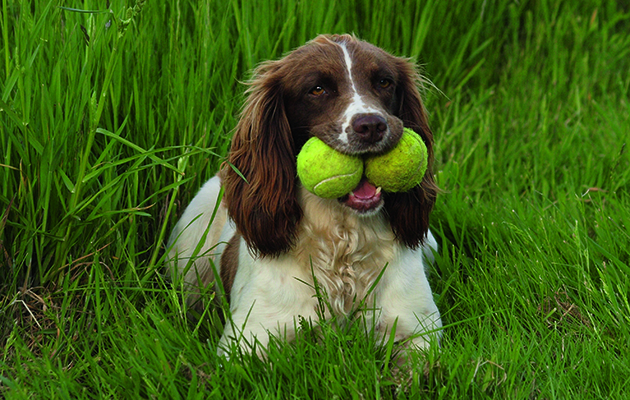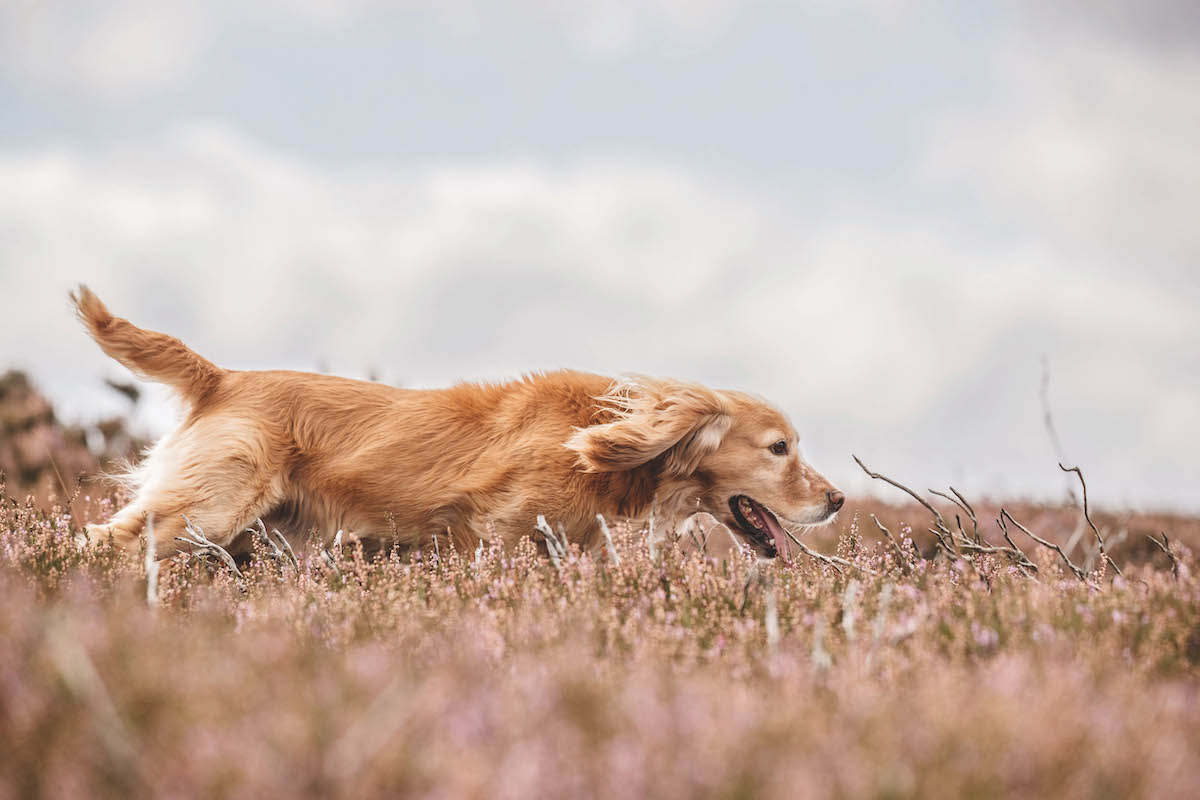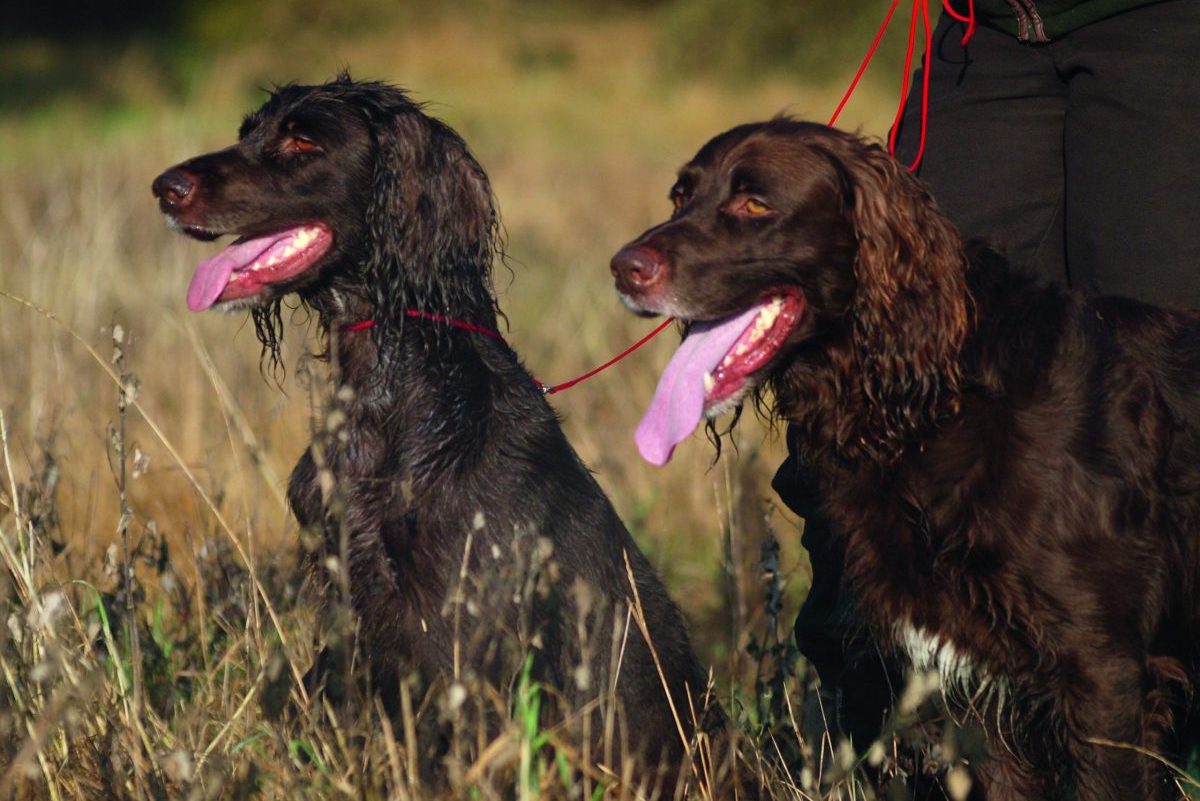Meet devotee of springer spaniels, Barrie Hughes
David Tomlinson meets a devotee of springer spaniels — having owned 13 of them over 50 years — and finds he has many more strings to his country bow

Bessie, Barrie's two-year-old springer is ready to serve
Spaniel ownership can be both enormously satisfying and extremely frustrating. I’ve survived 33 years of it, but am always full of admiration for those who have managed longer. So when I met Barrie Hughes and heard that he had owned working springers for exactly 50 years, I wanted to learn more. I soon discovered that, though Barrie is completely devoted to his springers, he is a man of many parts; spaniels, and shooting, are just part of an exceptionally busy life.
This is a gundog column so we will start with the spaniels. Barrie acquired his first shortly after the birth of his son, Michael, in 1966, his long-suffering wife Anne having to cope with both a baby and a puppy at the same time. Fortunately, both survived. Barrie has always been a keen shooting man, so the puppy was trained to work, as has every one of his spaniels since. In those 50 years he has owned some 13 springers, peaking with five at once, and currently down to two.
More than 1,000 days in the shooting field
During their careers his dogs have been expected to do everything from roughshooting and beating to working as peg dogs and picking-up. Barrie’s diaries record more than 1,000 days in the shooting field with his dogs in the last 49 years, a formidable total. He currently does about 45 days of different types of shooting every season.
Though he lives in rural Essex, in the Roman river valley not far from Colchester, Barrie has long been involved with the Suffolk Gundog Club (SGC) as well as the Essex Spaniel Get-Together. For many years, he has assisted with spaniel training sessions for SGC members; he also organises a less formal series of weekly training classes in the summer, providing a great opportunity for spaniel owners to get together and learn from each other.

Barrie has owned as many as five springer spaniels at one time, but is currently down to just two
“People don’t come to these sessions because I’m a great trainer, as it’s rather more a case of I’m a good organiser,” said Barrie. “I have access to lots of different ground, and that’s a big attraction. Many shoots are happy to welcome us until July, and then we tend to work in sugar beet fields or anywhere well away from the newly released poults. I also arrange sessions on the farm here. I release 50 or so melanistic pheasants every year, and they’re great for training.”
For the past 15 years, or since his retirement from being a mushroom farmer, Barrie has keepered a shoot. “It’s not really keepering, for the shoot owners look after the birds and control the vermin, but it’s a matter of organising the day, and making sure that there are enough beaters and pickers-up,” he explained. “I’m never short of the latter, as there are always people from my training days who are happy to help. For me, keepering, or running the shoot, has been a case of coming full circle in my shooting experience. I still find it very rewarding.”
Barrie Hughes: a man of many parts
I mentioned that Barrie is a man of many parts, and one of those parts is waterfowl keeper. Starting with a pair of tufted duck in 1972, his collection grew to more than 70 different species of wildfowl. Eventually, the duck and geese were devastated by mink — he trapped 27 mink in a single autumn.
“The first sign of the mink was the disappearance of the water voles, and it took a while to connect the two,” he said. “On one occasion I was walking along the river some 200 yards from our house when the spaniels flushed a mink. It sought refuge by climbing a tree overhanging the water. I told the spaniels to sit, and they held it at bay when I went to the house to get my shotgun out of the cabinet. When I got back not one of the five had moved. The mink was still there, so I shot it.” As tests of steadiness go, that’s pretty impressive.
Producer of bat setts
Growing the setts for cricket-bat willows is another of Barrie’s special interests. Barrie explained that the most successful locations for growing willows for cricket bats are Essex, Suffolk, Norfolk, Kent and Somerset. It takes a willow 18 years before it can be harvested for bat production, so it’s a slow process. Barrie doesn’t grow the mature trees, but instead produces the setts, or whips, that are planted to produce the trees.

Eight-year old Hazel is a skilled catcher of tennis balls.
“You take a freshly cut willow branch, about a metre long, drive it into ground and wait. Four years later you can take your first cash crop of setts.”
I’d never met a producer of bat setts before, so this was a first. Another was discovering that Barrie is a specialist producer of guineafowl, importing day- old chicks every month from France, then bringing them on to 15 to 20 weeks when they are ready for the table. He not only rears the birds, but also slaughters them and prepares them for the London restaurants that take the majority of his production. Fascinating.
I’d gone to talk to Barrie about spaniels, but such a diversity of interests made it a much more far-ranging interview. I did, however, ask him whether he had ever considered a Labrador. He gave me an old-fashioned look, but did admit he quite fancied a cocker.
“There are some really lovely cockers about, and if only they were a bit bigger they might be even better than a springer.” An interesting thought indeed.








